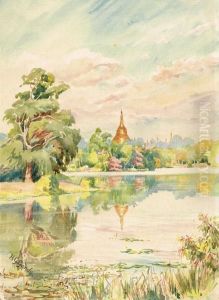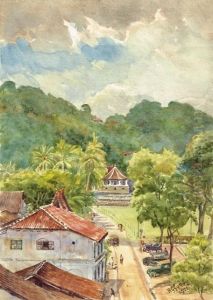Henry George Gandy Paintings
Henry George Gandy was an English architect, best known for his work in the early 20th century in what is now Pakistan and India, areas that were part of British India at the time. Born in 1880 in the United Kingdom, Gandy pursued his architectural education at the Architectural Association in London, graduating in the early 1900s. His education and talent soon led him to the British colonial territories, where he embarked on a career that would make significant contributions to the architectural landscape of the region.
Gandy's work is characterized by its eclectic approach, combining elements of traditional Indo-Saracenic architecture with European styles, particularly the Neo-Classical and Gothic. This synthesis was reflective of the broader colonial endeavor to blend Western and Eastern architectural traditions, aiming to create structures that resonated with both the colonial rulers and the local populations.
One of Gandy's most notable projects was his involvement in the design and construction of the University of Lucknow in India. This project, undertaken in the 1920s, stands as a testament to his ability to integrate various architectural influences into a cohesive and visually appealing whole. The university's buildings are admired for their intricate detail, grand scale, and the successful fusion of Indian and British architectural elements.
Throughout his career, Gandy was not merely an architect but also an educator and a mentor to many aspiring architects in India and Pakistan. His influence extended beyond his buildings, as he played a pivotal role in the development of architectural education in the region, emphasizing the importance of a balanced approach that respected both local traditions and modern innovations.
Gandy's legacy in the subcontinent is enduring, with many of his buildings still in use and admired for their architectural beauty and historical significance. His work remains a subject of study for architects and historians, offering insights into the complexity of colonial-era architecture and its lasting impact on the built environment of India and Pakistan.
Henry George Gandy passed away in 1950, leaving behind a rich architectural heritage that continues to be celebrated for its innovation, elegance, and cultural synthesis. His contributions to architecture, particularly in the context of British India, highlight the dynamic exchange between different architectural traditions and the creative possibilities of cross-cultural collaboration.














